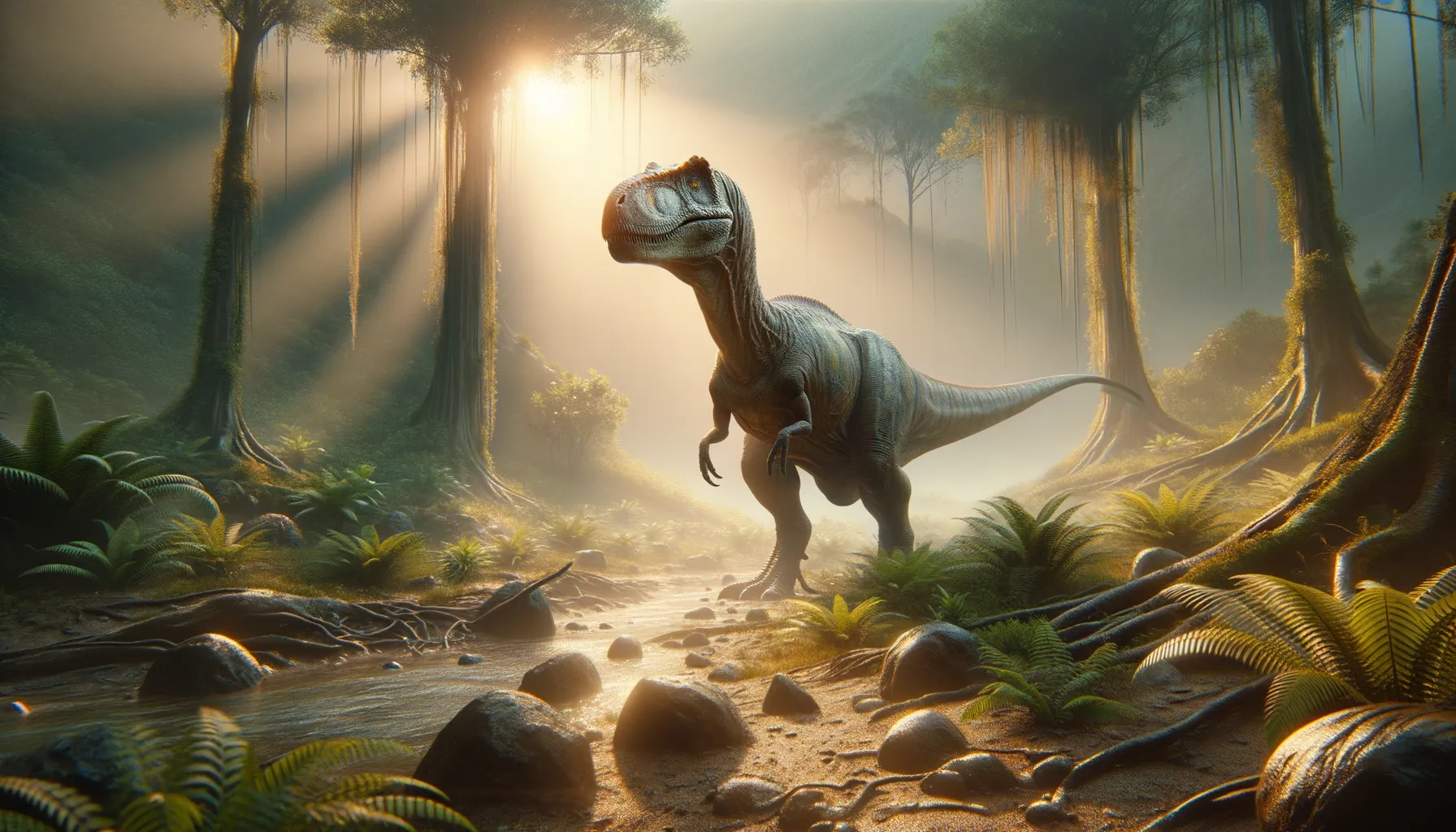
Abrictosaurus
A Jurassic herbivore with nimble feet.
Period
Jurassic
Length
Around 1.2 meters (4 feet).
Height
Approximately 1 meter (3.3 feet).
Weight
About 45 kilograms (100 pounds).
Abrictosaurus was a small, bipedal herbivorous dinosaur from the early Jurassic period. It is known for its distinctive skull shape and its aptitude for living in a variety of Jurassic landscapes. This dinosaur was an integral part of its ecosystem, contributing to the plant dynamics of its time. Its fossils provide crucial insights into early dinosaur evolution and behavior.
Diet
Abrictosaurus primarily fed on plants, including ferns and cycads. Its teeth were adapted to processing tough vegetation, making it a well-equipped herbivore of its time.
Hunting
As a herbivore, Abrictosaurus did not hunt other animals. It may have foraged in relatively open areas where it could spot predators while consuming plants.
Environmental challenges
Abrictosaurus faced challenges due to climatic changes that affected vegetation distribution. It needed to navigate between different plant-rich areas while avoiding predators. Seasonal changes might have impacted the availability of food, requiring adaptations in its foraging strategies.
Speed
Moderate; agile runner.
Lifespan
Estimated to live up to 10 years.
First discovery
Unearthed in the early 1970s in Southern Africa.
Fun Facts
- Abrictosaurus was a small, early dinosaur about the size of a large house cat.
- Its name means 'awake lizard' because scientists initially believed it was more active than other dinosaurs of its kind.
- Abrictosaurus lived during the early Jurassic period, around 200 million years ago.
- Unlike many dinosaurs, Abrictosaurus is thought to have been herbivorous, primarily eating plants.
- Fossils of Abrictosaurus have been found in what is now southern Africa.
- It had small, sharp teeth perfect for slicing through vegetation.
- Abrictosaurus is part of a group called heterodontosaurs, known for having different types of teeth.
Growth and Development
Abrictosaurus grew rapidly during its early life stages to reach its adult size, which was crucial for survival. This rapid growth may have helped it avoid predation by becoming less vulnerable over time. Discoveries of juvenile fossils suggest that these dinosaurs underwent significant physical changes as they matured.
Habitat
This dinosaur inhabited regions with diverse plant life in early Jurassic southern Africa. It thrived in environments with moderate climates and an abundance of low-lying vegetation. Such locations offered a steady food supply and natural shelter from predators.
Interaction with other species
Abrictosaurus was likely part of a complex ecosystem interacting with contemporary herbivores and carnivores. It had to coexist with larger herbivorous dinosaurs competing for similar food sources. Additionally, it needed to avoid predators like early theropods that roamed the same regions.
Natural lifespan
Abrictosaurus likely had a natural lifespan of about 10 years.
Reproduction
Abrictosaurus likely laid eggs, as is common in dinosaur reproduction. Nests were likely built in safe areas, with eggs incubated by the sun's warmth. Parental care dynamics are unknown but may have involved some level of nest protection.
Social behaviour
There is limited evidence on social behavior, but Abrictosaurus might have lived in small groups for protection. Such grouping behavior could assist in spotting predators and sharing resources like food. Solitary living is also a possibility depending on environmental pressures.
Fossil locations
Fossils of Abrictosaurus have been discovered in the Golden Gate Highlands National Park in South Africa. These findings provide valuable insights into its anatomy and suggest a widespread distribution in the region during the Jurassic period.
